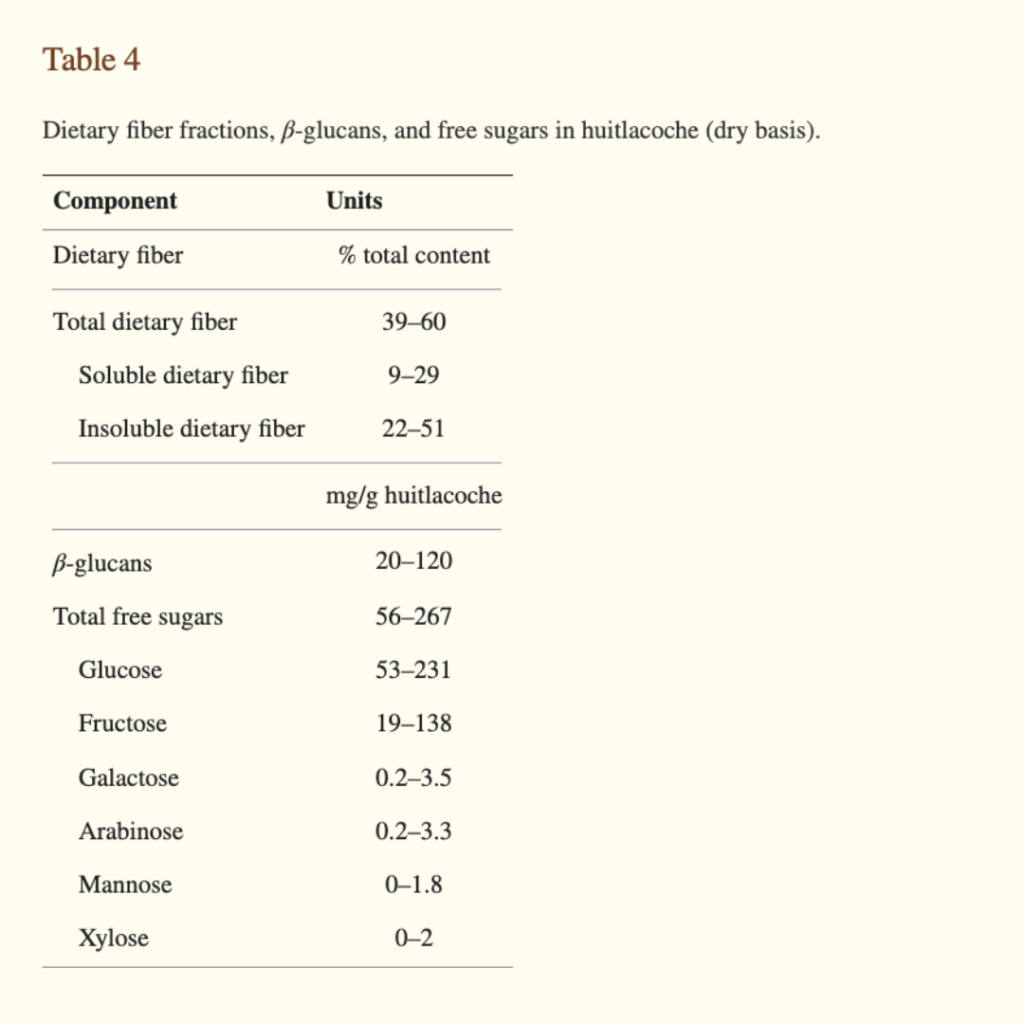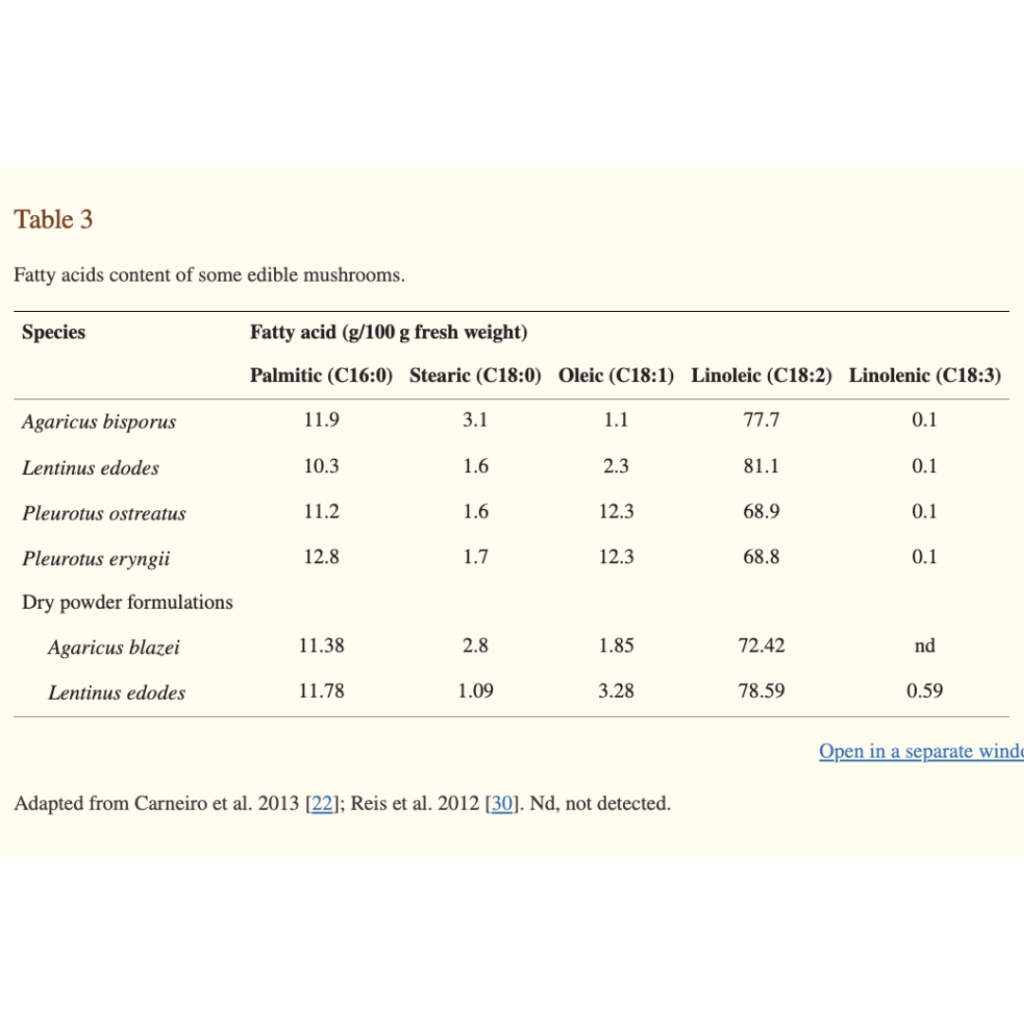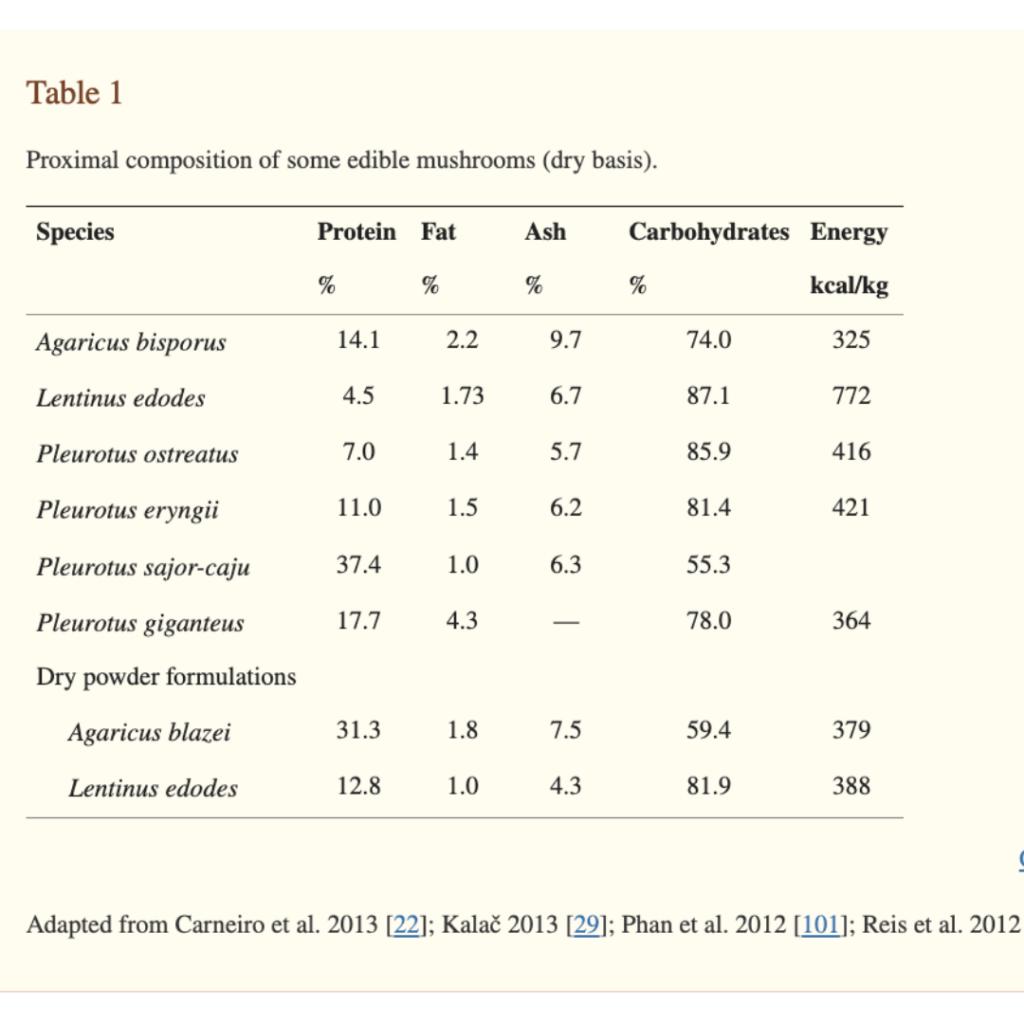Wild Mushrooms 101: How To Make Them A Dietary Staple And Why
In the realm of health and nutrition, the source of our food plays a crucial role in its benefits to our well-being. Locally foraged mushrooms, such as Golden Chanterelles and Chicken of the Woods, offer a plethora of health advantages over their store-bought counterparts. Let’s explore the health benefits and nutritional advantages wild organic mushrooms, grounded in scientific research and peer-reviewed studies, to offer a compelling argument for their inclusion in our diets.
Scientific Basis for the Superiority of Locally Foraged Mushrooms
Research indicates that mushrooms’ nutritional content can be influenced by their growing conditions. A study published in the “Journal of Agricultural and Food Chemistry” found that wild mushrooms tend to have higher levels of antioxidants compared to those cultivated commercially (Barros, Ferreira, Queiros, Ferreira, & Baptista, 2007). These antioxidants, such as selenium and ergothioneine, are crucial for reducing oxidative stress and preventing chronic diseases.
Why Locally Foraged Wild Mushrooms Outshine Store-Bought Varieties
Locally foraged mushrooms offer fresher, more nutrient-dense options compared to commercially grown ones. The act of foraging itself ensures that mushrooms are picked at their peak, preserving their nutritional value and flavour. Unlike store-bought mushrooms, which might have been harvested days or weeks before reaching the consumer, wild mushrooms are free from pesticides and not subject to the stress of mass production, which can deplete their nutritional content.
The term “mushroom” refers to various species of fungi within the order Basidiomycetes, renowned as one of the world’s most nutritious food sources. Basidiomycetes or Ascomycetes frequently emerge in areas rich in humus, organic material, moisture, wood, or animal remains following significant rainfall or sudden temperature shifts. However, these mushrooms eventually disappear, leaving only the mycelium behind.
According to Zeid et al. (2011), research has identified over 70,000 fungal species globally, of which 2,000 are edible mushrooms. Approximately 10% of these are poisonous, with a small number being deadly. Mushrooms play a crucial role in nutrient recycling within forest ecosystems due to their exceptional ability to decompose complex cellulosic materials like leaves and wood into simpler substances. The Pleurotus species, in particular, is celebrated worldwide, especially in Asia and Europe, for its low-cost cultivation and high organic yield.
Wild Mushrooms as a Dietary Supplement
Historically, mushrooms have been utilized as dietary supplements, contributing significantly to health, nutrition, and disease prevention. They are capable of producing high-quality protein from agricultural waste. Compared to other crops, mushrooms offer a solution to malnutrition by providing a substantial protein yield per unit area in a short period. They are low in calories, carbohydrates, calcium (Ca), and sodium (Na), yet high in unsaturated fats without harmful lipids.
Mushrooms are also a rich source of vitamins, including the B complex (0.013 to 0.060g), vitamin C (0.092 to 0.144 g), and folic acid (0.012-0.014 g) on a dry weight basis, alongside essential minerals like calcium, iron, manganese, magnesium, zinc, and selenium. They serve as an excellent alternative to meat, fish, vegetables, and fruits.
Medicinally, mushrooms are valuable for reducing the risks associated with hypertension, hypercholesterolemia, atherosclerosis, and cancer. Their antioxidant properties also aid in lowering total blood cholesterol, lipoprotein cholesterol, and blood glucose levels.
Nutritional Content of Chanterelles and Chicken of the Woods: A Closer Look
Golden Chanterelles are rich in vitamins and minerals. A study in “Food Chemistry” highlighted that chanterelles contain significant amounts of vitamin D2 (ergocalciferol) when exposed to sunlight, enhancing bone health and immune function. Chicken of the Woods, according to research published in “Mycologia,” offers a unique nutritional profile with high protein content and essential amino acids, making it an excellent meat substitute.
Both types of mushrooms contain polysaccharides, including beta-glucans, which are significant for their health-promoting properties. Beta-glucans are known for their role in immune system support and may contribute to lowering cholesterol, improving heart health, and modulating blood sugar levels.
They contain at least 15 amino acids, which are the building blocks of proteins, crucial for various bodily functions including the synthesis of hormones, enzymes, and supporting muscle repair and growth. The mineral content in these mushrooms can be quite varied and is influenced by the soil and environment in which they grow. This can lead to differences in mineral content even within the same species.
Nutritional Content of Golden Chanterelles (Cantharellus cibarius)
Vitamins:
- Vitamin D (D2, ergocalciferol)
- Vitamin C (ascorbic acid)
- B vitamins (niacin (B3), riboflavin (B2), thiamine (B1))
- Vitamin A (beta-carotene)
- Vitamin K
Minerals:
- Potassium
- Copper
- Iron
- Manganese
- Selenium
- Zinc
- Calcium
Amino Acids:
- Alanine – Involved in metabolism and energy production.
- Arginine – Plays a role in cell division and healing of wounds.
- Asparagine – Necessary for brain and nervous system health.
- Aspartic Acid – Used in the synthesis of other amino acids and in the urea cycle.
- Glutamic Acid – A neurotransmitter that is critical for cognitive functions.
- Glutamine – Supports immune system health and intestinal health.
- Glycine – Contributes to the construction of DNA and RNA strands.
- Histidine – Important for growth and repair of tissues.
- Isoleucine – An essential amino acid, crucial for muscle metabolism and immune function.
- Leucine – Essential for protein synthesis and muscle repair.
- Lysine – Essential for protein synthesis, hormone and enzyme production.
- Methionine – Essential for metabolism and detoxification.
- Phenylalanine – Precursor for neurotransmitters.
- Threonine – Essential for protein balance in the body.
- Valine – Stimulates muscle growth and regeneration.
Antioxidants:
- Carotenoids (beta-carotene)
- Selenium
- Vitamin C
- Phenolic Compounds
Fatty Acids:
- Linoleic Acid (Omega-6) – Plays a crucial role in cellular health and inflammation regulation.
- Oleic Acid – Beneficial for heart health, known to help reduce LDL cholesterol levels and increase HDL cholesterol levels.
- Palmitic Acid – Contributing to cell membrane integrity.
- Stearic Acid – Has a neutral effect on blood cholesterol levels.
- α-Linolenic Acid – Plays a critical role in brain function as well as normal growth and development.
Nutritional Content of Chicken of the Woods (Laetiporus sulphureus)
Vitamins:
- Vitamin C
- B vitamins (pyridoxine (B6), niacin (B3), riboflavin (B2), thiamine (B1))
- Vitamin D
- Vitamin K
Minerals:
- Potassium
- Calcium
- Magnesium
- Phosphorus
- Sodium
- Iron
- Selenium
Amino Acids:
- Histidine – Supports tissue repair and nerve protection.
- Isoleucine – Crucial for muscle metabolism and immune function.
- Leucine – Aids muscle repair and regulates blood sugar.
- Lysine – Essential for protein synthesis and calcium absorption.
- Methionine – Important for metabolism and detoxification.
- Phenylalanine – Needed for neurotransmitter production.
- Threonine – Supports protein balance and immune function.
- Tryptophan – Precursor to serotonin, affects mood and sleep.
- Valine – Stimulates muscle growth and energy provision.
- Alanine – Converts glucose into energy.
- Arginine – Promotes healing and hormone release.
- Asparagine – Necessary for brain development and function.
- Aspartic acid – Involved in energy production.
- Glutamic acid – A key neurotransmitter for neural activation.
- Glutamine – Fuels cells and supports the immune system.
- Glycine – Crucial for protein synthesis and detoxification.
- Proline – Important for collagen production and wound healing.
- Serine – Plays a role in fat metabolism and immune health.
- Tyrosine – Precursor to important hormones, improves alertness.
Antioxidants:
- Polysaccharides
- Ascorbic Acid
- Phenolic Compounds
- Tocopherols (Vitamin E variants)
Fatty Acids:
- Linoleic Acid (Omega-6) – Plays a crucial role in cellular health and inflammation regulation.
- Oleic Acid – Beneficial for heart health, known to help reduce LDL cholesterol levels and increase HDL cholesterol levels.
- Palmitic Acid – Contributing to cell membrane integrity.
- Stearic Acid – Has a neutral effect on blood cholesterol levels.
- Palmitoleic Acid
Both mushrooms likely contain additional minor fatty acids, but these would only be identified through specific scientific analyses. These analyses could reveal a broader range of both saturated and unsaturated fatty acids, including but not limited to myristic acid, lauric acid, behenic acid, and more, depending on the mushrooms’ environment and growth conditions.
Golden Chanterelles are known for their immune-boosting properties, thanks to their high vitamin D content. They also contribute to improved vision and skin health due to their vitamin A and antioxidants.
Chicken of the Woods, on the other hand, is appreciated for its meaty texture and ability to serve as a protein substitute in vegetarian and vegan diets. Its richness in antioxidants can help reduce inflammation and support heart health.
Polysacchrides in Wild Mushrooms
Polysaccharides in mushrooms, including both Golden Chanterelles (Cantharellus cibarius) and Chicken of the Woods (Laetiporus sulphureus), play a significant role in their nutritional and health-promoting properties. These complex carbohydrates are not only a source of dietary fiber but also have various bioactive properties that contribute to health benefits.
Polysaccharides in Golden Chanterelles
Golden Chanterelles are known for their delicious taste and nutritional benefits, although specific studies on their polysaccharide content are less common than for other mushrooms. However, like many mushrooms, chanterelles contain a variety of polysaccharides, including glucans and mannans. These polysaccharides are believed to contribute to the immune-modulating effects of chanterelles, enhancing the body’s defense mechanisms against pathogens. The polysaccharides in chanterelles may also support gut health by acting as prebiotics, substances that feed beneficial gut bacteria.
Polysaccharides in Chicken of the Woods
Chicken of the Woods is rich in a variety of polysaccharides, including beta-glucans. These polysaccharides have been studied for their potential to stimulate the immune system, particularly through the activation of macrophages, natural killer cells, and other immune cells. This can help the body’s defense mechanisms against infections and potentially cancerous cells. The polysaccharides in Chicken of the Woods may also have antioxidant properties, contributing to the reduction of oxidative stress and inflammation in the body.
Health Benefits of Mushroom Polysaccharides
The health benefits of mushroom polysaccharides, including those found in Golden Chanterelles and Chicken of the Woods, are primarily related to their immune-modulating and anti-inflammatory effects. By supporting the immune system, these polysaccharides can help protect against various diseases, from common infections to more serious conditions like cancer. The antioxidant properties of these compounds also contribute to overall health by combating oxidative stress, which is linked to chronic diseases such as heart disease and diabetes.
Beta-Glucans 1/3, 1/6: Health Benefits of Wild Mushrooms
Beta-glucans are a specific type of polysaccharide found abundantly in many mushrooms, grains, and seaweeds. They are known for their unique structure, often referred to by their specific bonds, such as 1/3, 1/6 glucans. These numbers describe the positions of the glucose units bonded together in the polysaccharide chain, which is critical for their biological activity.
Beta-glucans are particularly recognized for their role in immune system support. They are considered biological response modifiers due to their ability to enhance immune system responses without directly attacking pathogens themselves. Research suggests that beta-glucans can:
- Boost Immune Defense: They enhance the immune system by activating white blood cells like macrophages and natural killer cells, which are crucial for the body’s defense against pathogens and cancer cells.
- Support Cardiovascular Health: Beta-glucans have been shown to lower cholesterol levels by binding to bile acids and promoting their excretion, which may reduce the risk of heart disease.
- Regulate Blood Sugar: They can help stabilize blood sugar levels by slowing down the absorption of sugar in the intestine, beneficial for managing diabetes and insulin resistance.
- Promote Gut Health: As soluble fibers, beta-glucans act as prebiotics, supporting the growth of beneficial gut bacteria and improving gut health.
The specific beta-glucans structure, such as those found in mushrooms, is thought to be particularly effective in modulating the immune system, making mushrooms like Golden Chanterelles and Chicken of the Woods valuable dietary components for health maintenance and disease prevention.
Health Benefits of Each Mushroom Supported by Research
The immune-boosting properties of Golden Chanterelles are supported by their vitamin D and antioxidant content. A review in “Frontiers in Immunology” discusses how vitamin D plays a pivotal role in modulating the immune system and protecting against autoimmune diseases. For Chicken of the Woods, its potential in reducing inflammation and supporting heart health can be attributed to its antioxidant properties. A study in “The American Journal of Clinical Nutrition” suggests that dietary antioxidants are linked to a lower risk of heart disease (Knekt, Ritz, Pereira, O’Reilly, Augustsson, Fraser, Goldbourt, Heitmann, Hallmans, Liu, Pietinen, Spiegelman, Stevens, Virtamo, Willett, Ascherio, Rimm, 2004).
More than 100 medicinal functions are produced by mushrooms and fungi and the key medicinal uses are antioxidant, anticancer, antidiabetic, antiallergic, immunomodulating, cardiovascular protector, anticholesterolemic, antiviral, antibacterial, antiparasitic, antifungal, detoxification, and hepatoprotective effects; they also protect against tumor development and inflammatory processes. Numerous molecules synthesized by macrofungi are known to be bioactive, and these bioactive compounds found in fruit bodies, cultured mycelium, and cultured broth are polysaccharides, proteins, fats, minerals, glycosides, alkaloids, volatile oils, terpenoids, tocopherols, phenolics, flavonoids, carotenoids, folates, lectins, enzymes, ascorbic, and organic acids, in general. Polysaccharides are the most important for modern medicine and β-glucan is the best known and the most versatile metabolite with a wide spectrum of biological activity.
A balanced diet is the supporting treatment for the prevention of illness and especially against oxidative stress. In this context, mushrooms have a long history of use in the oriental medicine to prevent and fight numerous diseases. Nowadays, mushroom extracts are commercialized as dietary supplements for their properties, mainly for the enhancement of immune function and antitumor activity.
The Use of Powdered Wild Mushrooms in Food: Enhancing Nutritional Intake
The application of powdered mushrooms in enhancing food nutritional content is an area of growing interest. Research indicates that mushroom powder can serve as a nutrient-dense supplement, offering a convenient way to incorporate these fungi into the diet. A study in “Journal of Food Science and Technology” explores the benefits of mushroom powders in improving dietary fiber, protein, and antioxidant intake (Valverde, Hernandez-Perez, & Paredes-Lopez, 2015).
Powdered wild mushrooms like Seaflora’s locally wild foraged mushrooms, offer a convenient way to enjoy the health benefits of fungi. This versatile form can easily be added to coffee, tea, or even used to make mushroom-infused teas. The powder can also be sprinkled on meals or incorporated into most recipes, offering a simple method to boost nutritional intake and flavour.
Disease Prevention through Daily Mushroom Consumption
The role of Golden Chanterelles and Chicken of the Woods in disease prevention, particularly in reducing the risk of certain cancers and supporting heart health, is supported by their bioactive compounds. A meta-analysis published in “Cancer Epidemiology, Biomarkers & Prevention” found a significant association between higher mushroom consumption and a lower risk of cancer.
It’s so easy to add powdered mushrooms to coffee, tea, juice, smoothies, salads, sauces, and literally any other dish!
Health Benefits of Wild Mushrooms
- Rich in Nutrients: Chanterelles are a source of vitamins and minerals, including Vitamin D, beta-carotene, lycopene, Vitamin A, Vitamin E, Vitamin C, thiamine (B1), riboflavin (B2), Vitamin B6, potassium, selenium, manganese, copper, iron, and phosphorus.
- Anti-inflammatory: They contain compounds that help reduce inflammation, which can be beneficial in preventing and managing inflammatory conditions
- *Cancer Risk Reduction: Some studies suggest that the bioactive compounds in chanterelles may lower the risk of certain cancers
- Antioxidant Properties: Chanterelles contain antioxidants such as phenolic compounds, which can help protect the body from oxidative stress and may reduce the risk of chronic diseases
- Supports Bone Health: The vitamin D content in chanterelles is important for bone health, as it helps the body absorb calcium
- Promotes Immunity: The beta-glucans in chanterelles act as prebiotics for the gut and support the immune system
- Cardiovascular Protection: Chanterelles may improve glucose and lipid metabolism and help regulate blood pressure, which is beneficial for cardiovascular health
- Neuroprotective Actions: Certain compounds in chanterelles have been linked to neuroprotective effects, which could be beneficial in preventing neurodegenerative diseases
*This statement is supported by the following evidence:
1. A systematic review and meta-analysis published in Advances in Nutrition found that higher mushroom consumption was associated with a lower risk of total cancer. Specifically, individuals who ate about 18 grams of mushrooms daily had a 45% lower risk of cancer compared to those who did not eat mushrooms.
2. A study published in PubMed Central reported that extracts from numerous mushroom species, including chanterelles, have been tested for anticancer activities. These extracts were found to reduce the viability of over 38 different cancer cell lines.
3.
While these studies don’t focus exclusively on chanterelles, they provide evidence for the potential cancer risk reduction properties of wild mushrooms in general, which includes chanterelles and hen of the woods. It’s important to note that more research is needed to fully understand the specific effects of chanterelles and chicken of the woods on cancer risk.
Unique Bioactive Compounds:
- Polysaccharides: These have health-boosting properties and include beta-glucans known for their role in immune function.
- Fatty Acids: Chanterelles contain polyunsaturated fatty acids (PUFAs) and other fatty acids that contribute to their anti-inflammatory properties.
- Phenolic Compounds: These antioxidants are responsible for some of the anti-inflammatory and cancer risk reduction benefits.
- Vitamin D: Wild-harvested chanterelles are particularly high in vitamin D, which is less common in commercially grown mushrooms.
- Amino Acids: Chanterelles contain about fifteen different amino acids, which are the building blocks of proteins.
- Indolic Compounds: These are bioactive molecules that have been associated with anti-inflammatory effects.
- Zinc: An essential mineral for immune function and metabolism.
- Ergothioneine and Hericenones: These compounds have been linked to potential neuroprotective effects.
In summary, Golden Chanterelles especially, offer a range of health benefits due to their rich nutrient profile and bioactive compounds. They are particularly noted for their anti-inflammatory, antioxidant, and immune-boosting properties, as well as their potential to reduce the risk of cancer and support bone health.
Supporting Sustainable Diets: The Versatility of Powdered Wild Mushrooms
The support of these mushrooms for diverse diets and their role in sustainable eating practices is underlined by their nutritional versatility and low environmental impact. A publication in “Environmental Science & Technology” argues for the inclusion of wild-foraged foods in diets as a means to promote biodiversity and reduce food system carbon footprints.
In conclusion, the scientific literature supports the health benefits, nutritional value, and environmental advantages of incorporating Golden Chanterelles and Chicken of the Woods into our diets. Their contribution to disease prevention, along with their support for sustainable dietary practices, makes them an invaluable component of a health-conscious lifestyle. By grounding our understanding of these fungi in research and peer-reviewed data, we can appreciate the profound impact they can have on our health and well-being.
Suitable for any diet:
- Vegan
- Paleo
- Vegetarian
- Carnivore
- Keto
Wild-foraged foods, such as the Golden Chanterelles, are typically sourced from diverse ecosystems and do not require the intensive agricultural practices associated with large-scale farming. This means they can help maintain biodiversity by not disrupting habitats and reducing the need for monocultures, which are known to diminish biodiversity.
Moreover, the carbon footprint of wild-foraged foods is generally lower than that of conventionally farmed foods. This is because wild foraging does not involve the use of fossil fuels for plowing, sowing, fertilizing, or harvesting. It also avoids the greenhouse gas emissions associated with the production and use of synthetic fertilizers and pesticides.
What are you waiting for? They are delicious, easy to use, sustainable, and super freaking healthy. Try Seaflora’s locally wild foraged mushrooms from the coastal islands of British Columbia today!










